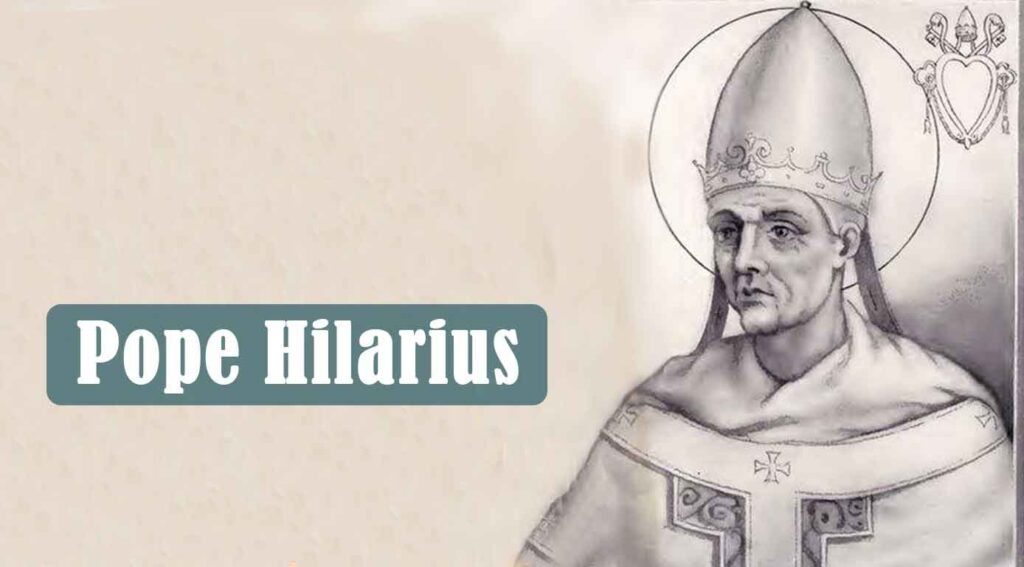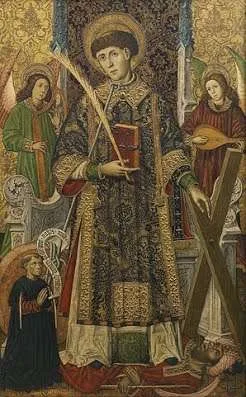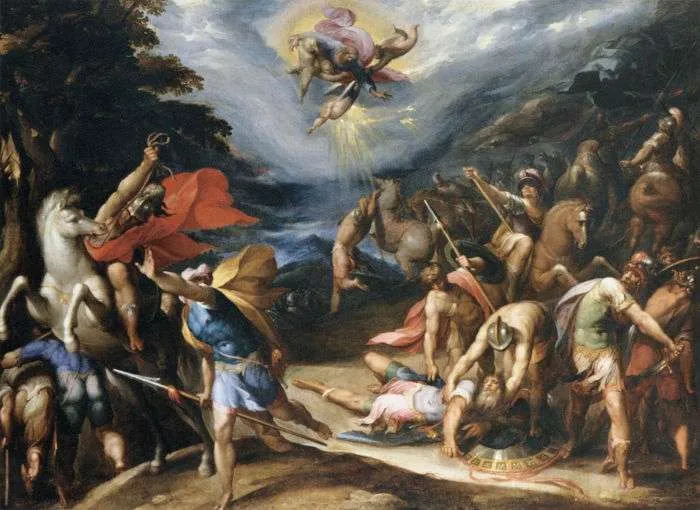Pope Hilarius was born in Sardinia. In 449, Hilarius served as a legate for Pope Leo I at the Second Council of Ephesus. His opposition to the condemnation of Flavian of Constantinople incurred the enmity of Dioscurus of Alexandria, who attempted to prevent him from leaving the city. Hilarius was able to make his escape and returned to Rome by an indirect route. He later erected an oratory at the Lateran in honor of John the Evangelist, to whom he attributed his safe passage.
As pope, he continued the policy of his predecessor, Leo I, who, in his contest with Hilary of Arles, had obtained from Emperor Valentinian III a famous rescript of 444 (called Novel 17) confirming the supremacy of the bishop of Rome. Hilarius continued to strengthen ecclesiastical government in Gaul and Spain.
In Rome, Hilarius worked zealously to counter the new emperor’s 467 edict of toleration for schismatic sects, which had been inspired, according to a letter of Pope Gelasius I, by a favourite of Emperor Anthemius named Philotheus, who espoused the Macedonian heresy. On one of the emperor’s visits to St Peter’s Basilica, the pope openly called him to account for his favourite’s conduct, exhorting him by the grave of St Peter to promise that he would allow no schismatical assemblies in Rome.
He was the bishop of Rome from 19 November 461 to his death on 29 February 468.
Sources:
https://en.wikipedia.org/wiki/Pope_Hilarius
Alban Butler, Paul Burns. Butler's Lives of the Saints: February, p. 266. A&C Black, 1995
https://www.catholic.org/saints/saint.php?saint_id=3774








